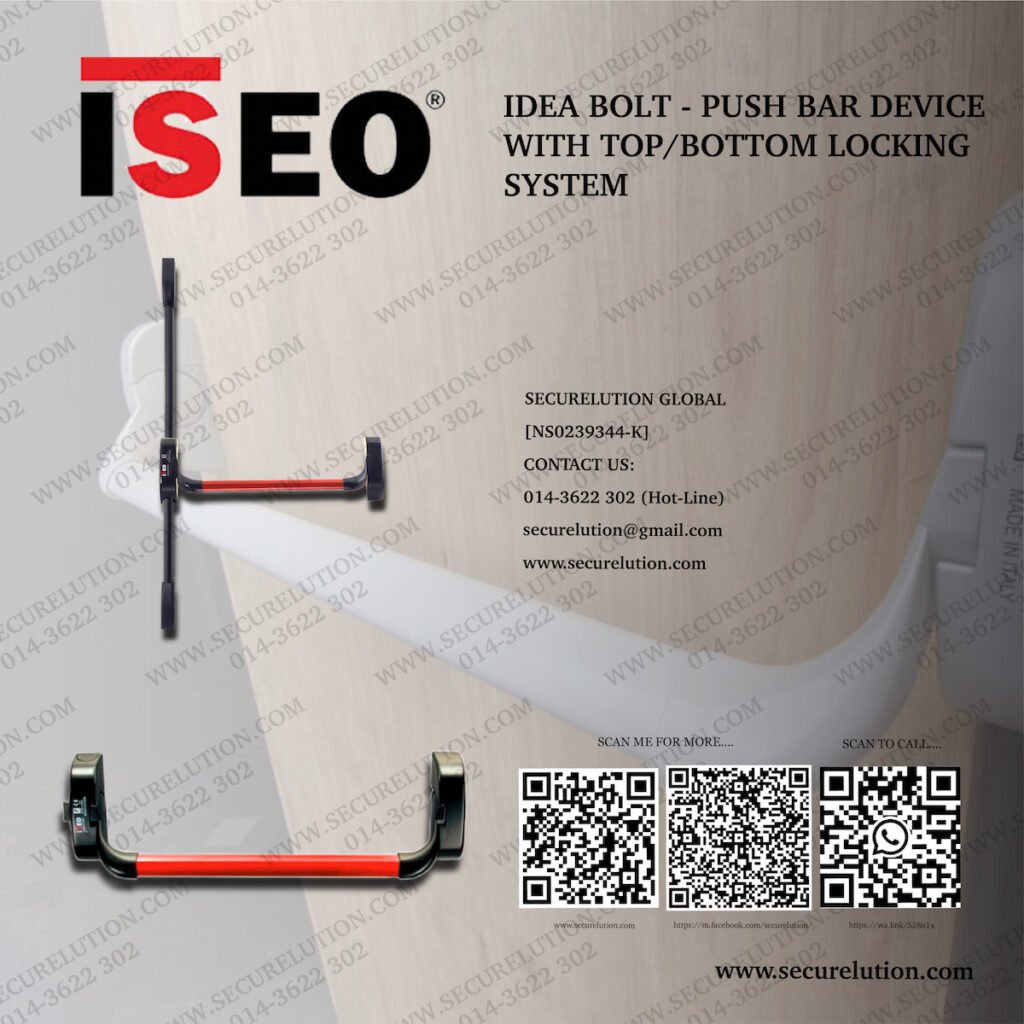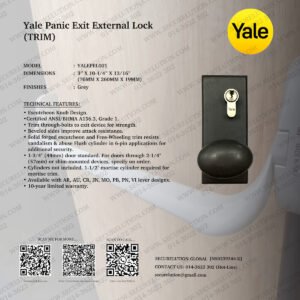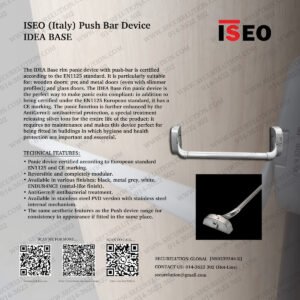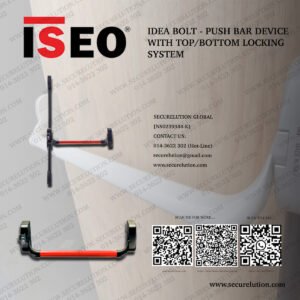Panic Exit
Panic exit devices play a crucial role in ensuring the safety and security of occupants in buildings, particularly during emergency situations. Here are some key points highlighting their importance:
1
Emergency Egress: Panic exit devices are designed to facilitate swift and unobstructed egress from a building, especially during high-stress and panic-inducing events such as fires, natural disasters, or security threats. This rapid and unimpeded exit can help save lives by allowing individuals to leave the building quickly and safely.
2
Compliance with Building Codes: Building codes and safety regulations often mandate the installation of panic exit devices in commercial and public buildings to ensure compliance with safety standards. These devices are essential for meeting legal requirements related to fire safety and emergency evacuation procedures.
3
Accessibility and Inclusivity: Panic exit devices are engineered to be user-friendly and accessible to a wide range of individuals, including those with disabilities or mobility challenges. In emergency situations, the intuitive design of these devices allows for quick and effortless operation, making them inclusive and accommodating for all building occupants.
4
Prevention of Crowd-related Incidents: During an emergency, panic and chaos can ensue, potentially leading to crowd-related incidents and congestion at exit points. Panic exit devices help mitigate these risks by providing a clear and easily accessible means of egress, minimizing the potential for overcrowding and trampling.
5
Enhanced Security: While panic exit devices are primarily designed for emergency egress, they also contribute to the overall security of a building. By providing a fast and efficient means of exiting the premises, panic exit devices can help prevent bottlenecks at exit points and reduce the risk of people being trapped inside during critical situations.
ISEO Panic Exit
ISEO is a well-known manufacturer of security products, including push bars. A push bar, also known as a panic exit device or a crash bar, is a mechanism for quickly unlatching a door in emergency situations, allowing for swift and efficient egress from a building.
The ISEO push bar is designed to meet safety and security standards while providing ease of use in the event of an emergency. These devices are typically installed on exit doors in commercial and public buildings, and they offer a simple, one-step method for opening the door from the inside, allowing for rapid evacuation during emergencies such as fires, natural disasters, or other threatening situations.
ISEO push bars are engineered with durability and reliability in mind. They are usually constructed from high-quality materials such as hardened steel or aluminum, ensuring that they can withstand the rigors of everyday use and provide dependable performance when needed most.
In addition to their practical function, ISEO push bars are often designed with an emphasis on ease of installation and maintenance. They are engineered to meet industry regulations and building codes, providing peace of mind that they adhere to safety standards and can be seamlessly integrated into various building designs.
Overall, the ISEO push bar represents a crucial safety component in commercial and public buildings, allowing for swift and secure egress during emergency situations. These devices are a testament to ISEO’s commitment to producing reliable, high-performance security solutions for a wide range of applications.
Yale Panic Exit
The Yale push bar, also known as a panic bar or exit device, is a crucial component of building security and safety systems. It is designed to facilitate swift and effective egress from a building during emergency situations, such as fires or other crises, by allowing individuals to easily open an exit door without the need for precise turning of a traditional door handle or knob.
Yale push bars are engineered with durability, reliability, and ease of use in mind. They are often constructed from high-quality materials such as steel or aluminum, ensuring long-term performance while withstanding the rigors of daily use. These devices play a critical role in meeting safety standards and building codes, providing peace of mind for building occupants and owners alike.
The push bar is typically installed horizontally along the interior side of an exit door and is connected to the door’s latching hardware. In an emergency, individuals can simply apply pressure to the push bar to unlatch the door, allowing for rapid and unobstructed egress. Yale push bars are designed to offer a smooth and effortless operation to accommodate a wide range of users, including those with limited mobility or physical strength.
Yale is committed to producing reliable and high-performance security solutions, and the Yale push bar exemplifies this dedication by serving as a vital component in emergency exit systems for commercial and institutional buildings.











